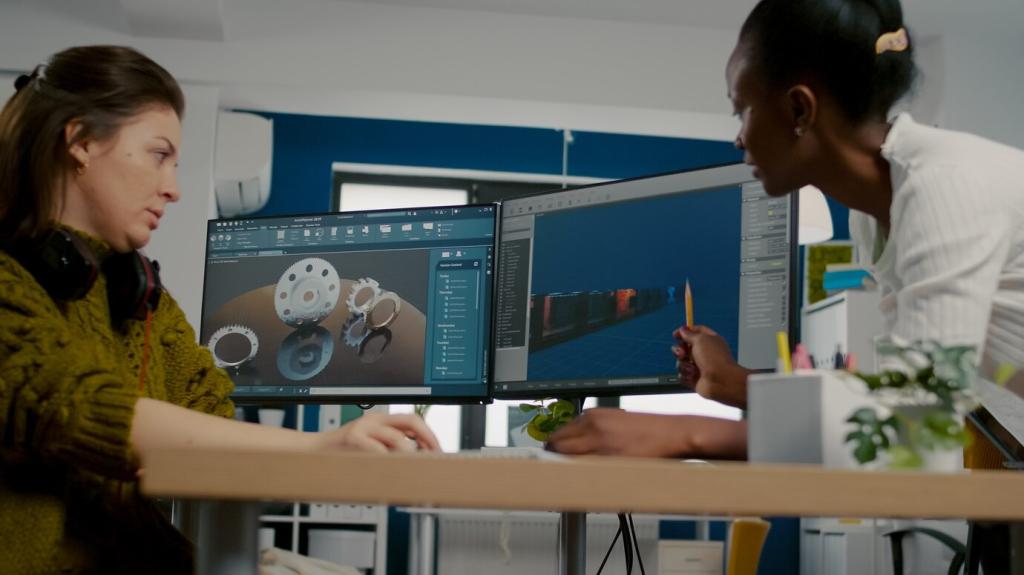Modern Color Trends for Building Exteriors: Bold Palettes, Lasting Impressions
Chosen theme: Modern Color Trends for Building Exteriors. Step outside the predictable and explore color choices that elevate architecture, respect climate, and reflect identity. From soft neutrals to inky statement shades, we will help you choose palettes with confidence. Join the conversation, share your façade experiments, and subscribe for fresh, real-world inspiration.
Curb Appeal Meets Climate
Color affects temperature, comfort, and maintenance. Light façades reflect heat and cut cooling loads, while darker bodies need better insulation and UV-stable finishes. Strategic contrast on trim and overhangs can control glare, reduce heat islands, and create crisp shadow lines that make architecture feel intentional.
Neighborhood Harmony Without Blending In
The smartest exteriors nod to local character while standing out with tasteful accents. Review historic or HOA guidelines, then layer distinction through door color, metal details, or nuanced trim. Think respectful boldness: harmony in the body color, personality in highlights, and consistent tones across additions and garages.
Storytelling Through Color
A couple in a desert town swapped faded beige for sage body, terracotta accents, and sand-colored trim. Suddenly the home echoed the surrounding mesas at sunset. Neighbors noticed the grounded warmth, and the owners felt their values visible from the street every day.

2025 Palette Highlights
Warm whites, mushroom greige, and limestone beige create calm backdrops that feel modern without sterility. They let architectural lines breathe and play beautifully with shadows. Pair with putty trim and light oak accents for depth. These neutrals photograph well and age gracefully on sunlit streets.

Materials, Finishes, and Light
01
Matte hides surface imperfections and feels architectural, while satin adds subtle richness and improved cleanability. Low-sheen exteriors balance both, reducing glare on sunny sites. For dark palettes, choose premium resins and UV additives to avoid chalking and streaking, preserving that deep, tailored look over time.
02
Fiber cement, stucco, brick, and metal each shift color perception. Slightly different tones across materials can create accidental mismatch. Aim for intentional contrast: a smoother dark body with lighter, textured masonry, or soft stucco paired with stained cedar. Consistent undertones tie the whole story together.
03
Colors skew cooler on north façades and warmer on west walls. Paint large test patches on all elevations, observe across days, and photograph at different hours. You will catch undertones you did not expect, ensuring the final palette remains flattering in every season and weather.
Low-VOC and Bio-Based Paints
Low-VOC paints minimize odors and improve air quality during and after application. Newer bio-based binders and recycled content options perform impressively on prepared substrates. A school retrofit we observed used low-VOC exterior coatings, and the community praised both the fresh look and healthier application experience.
Cool Pigments and SRI
Solar Reflectance Index helps quantify heat behavior. Light tones typically reflect more, but cool pigment technology lets even darker hues bounce infrared. Expect cooler walls, happier HVAC systems, and lower bills. Ask suppliers for SRI data and field references before committing your façade to a bold dark body.
Longevity and Maintenance
Modern finishes fight UV, mildew, and pollution better than ever, but maintenance still matters. Rinse façades seasonally, trim vegetation for airflow, and spot-recoat vulnerable edges. Thinking in life cycles, not weekends, keeps colors crisp, budgets predictable, and your street presence consistently confident.

The Confident Front Door
A saturated door transforms everything without overwhelming the block. Try oxblood, teal, or saffron against soft neutral bodies. One rental property we advised shifted to a deep teal entry and brass hardware, increasing drive-by interest and lease inquiries within a single weekend.

Two-Tone and Three-Tone Schemes
Follow the sixty thirty ten rule: dominant body, supportive trim, deliberate accent. Use deeper tones on lower volumes to ground tall façades, and lighter upper stories to lift. Keep undertones aligned, and repeat accent metals or woods so the composition reads as coherent and confident.

Balancing Metal, Wood, and Masonry
Blackened steel, warm cedar, and clay brick can sing together with the right palette. Choose a restrained body color, then echo wood warmth in soffits and decks. Let metal frames define edges, while masonry anchors the base, preventing visual noise and trend fatigue.
Plan, Test, and Share Your Palette
Digital Mockups and Augmented Reality
Use elevation photos and design apps to trial palettes quickly. Adjust undertones, swap trim, and compare finishes in context. AR previews are not perfect, but they help narrow choices and build confidence before you buy gallons. Save versions and ask friends for honest, constructive feedback.
On-Site Sampling Ritual
Prime test panels, paint generous swatches on multiple elevations, label them, and observe across sun and shade. Note morning coolness versus evening warmth. Stand across the street, then approach slowly. This ritual reveals the winning palette and protects your budget from rushed, irreversible decisions.
Join the Conversation
Tell us your climate, materials, and top three colors in the comments, and we will workshop combinations together. Subscribe for monthly palette breakdowns, product field notes, and case studies. Your before and after photos might inspire the next reader to choose boldly and wisely.
